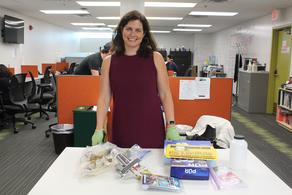Hot Topics
Filter by Topic Area:

Do Lead and Copper Rule Sampling Requirements Tell Us What We Need to Know About Lead in Water?
The U.S. Environmental Protection Agency (EPA) recently proposed Lead and Copper Rule Revisions (LCRR), with the public comment period ending on February 12, 2020. In the proposal, EPA requested comments on whether water systems with lead service lines should be required to collect tap samples that are representative of water that was in contact with lead service lines during the 6-hour stagnation period. The EPA LCR and the proposed LCRR requires water systems to collect the first liter of water from the tap after the stagnation period; this first liter typically does not include water from the lead service line, which is the largest source of lead in contact with drinking water. The first liter sample can potentially show the risk of lead release from internal plumbing, but it does not capture the highest risk water in a building with a lead service line.

Can Robots Find Our Lead Service Lines? Durfee Elementary School Students Think They Can!
These kids asked me to teach them about lead in water, then they came up with this innovative concept for speeding up lead service line replacement programs. If we can use their lead pipe detecting worm-bot to find all the lead pipes, we can save a lot of money and provide safer drinking water.

Following Flint, Increase Drinking Water Transparency
My opinion on what we need to do next to address lead in drinking water in Michigan. New sampling data shows there is more lead getting into our drinking water than we previously thought. Michigan will be a national leader for removing lead from drinking water.

New lead and copper data in Michigan raises questions about lead in water
Michigan water utilities have completed the first round of sampling under the new Michigan Lead and Copper Rule. Matt Smith at WXYZ-7 invited me to discuss lead in drinking water.

How do we prevent the next lead in water crisis?
The Detroit radio station, WDET 101.9, invited me to talk about Dr. Mona Hanna-Attisha’s book “What the Eye’s Don’t See,” the Flint Water Crisis, and the Michigan Lead and Copper Rule on Detroit Today with Stephen Henderson. This interview explains how I was able to bring visibility and recognition to the Flint Water Crisis. based on my experience in Washington, DC. It also explains how the Michigan Lead and Copper Rule provides better public health protection than the federal Lead and Copper Rule

